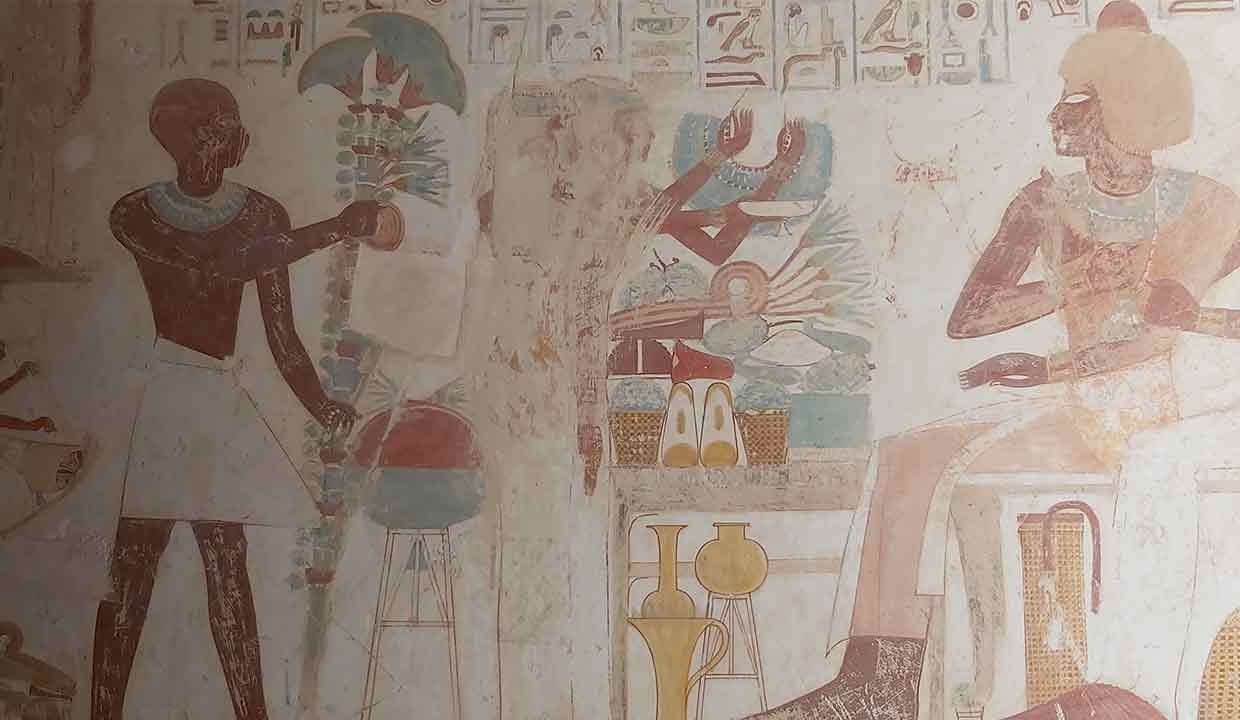4 Facts about Amazing Tombs of the Nobles: Luxor’s Gems.
Beyond Royal Chambers: Exploring Luxor’s Tombs of the Nobles
Nestled on the West Bank of the Nile in Luxor, overshadowed by the world-renowned Valley of the Kings and the Valley of the Queens, lie the Tombs of the Nobles. These tombs, often overlooked by the typical tourist route, provide a unique and intimate glimpse into the lives of ancient Egyptian nobility, officials, and other elites outside of the pharaonic circle.
Historical Context
While the pharaohs of ancient Egypt were buried in grand style in the Valley of the Kings and Queens, high-ranking officials, priests, and nobles were accorded their own burial places, reflective of their stature in life. Spanning various dynasties of the New Kingdom period, these tombs were cut into the limestone cliffs of the Theban hillside, offering an eternal resting place with a view of the Nile.
Artistic Richness and Insights into Daily Life
Unlike the royal tombs, which predominantly focused on the afterlife and religious texts, the Tombs of the Nobles showcase scenes from everyday life, giving visitors a more holistic view of ancient Egyptian society.
- Detailed Murals: The walls of these tombs are adorned with vivid murals depicting scenes from the daily lives of the deceased – agricultural activities, hunting scenes, feasts, and celebrations.
- Religious Rituals: While these tombs highlight secular life, they also feature religious rites, showcasing the nobles’ devotion and their roles in temple ceremonies.
- Hieroglyphic Inscriptions: Many tombs contain inscriptions, often autobiographical, that narrate the achievements and lineage of the tomb owner, providing invaluable historical insights.
Some Noteworthy Tombs
Among the hundreds of tombs in this area, a few stand out for their artistic beauty and historical importance:
- Tomb of Sennofer: Often called the “Tomb of Vines” due to its ceiling decorated with grapevines, this tomb is a beautiful representation of 18th Dynasty art.
- Tomb of Rekhmire: An important vizier during the reign of Thutmose III and Amenhotep II, Rekhmire’s tomb boasts detailed scenes of crafts, trade, and foreign tribute.
- Tomb of Nakht: Nakht, an 18th Dynasty astronomer, has a tomb adorned with vibrant scenes, including the renowned banquet scene, which is a masterpiece of ancient Egyptian art.
Preservation and Modern-Day Exploration
Like many archaeological sites in Egypt, the Tombs of the Nobles have faced challenges, ranging from natural decay to human-induced damages. Efforts have been made to restore and protect these historical treasures, and many are now open to the public.
Given their significance, it’s surprising how many visitors overlook these tombs in favor of more famous sites. However, those who venture here are rewarded with fewer crowds and a more personal exploration experience.
In Conclusion
The Tombs of the Nobles in Luxor offer a profound and vivid journey into the world of ancient Egyptian elites. While they might not possess the grandeur of the royal tombs, their intimate portrayals of life, society, and faith provide a unique, unfiltered window into a civilization whose influence and allure remain undiminished by the passage of time.
Explore Egypt Tours Tripadvisor



Comment (0)